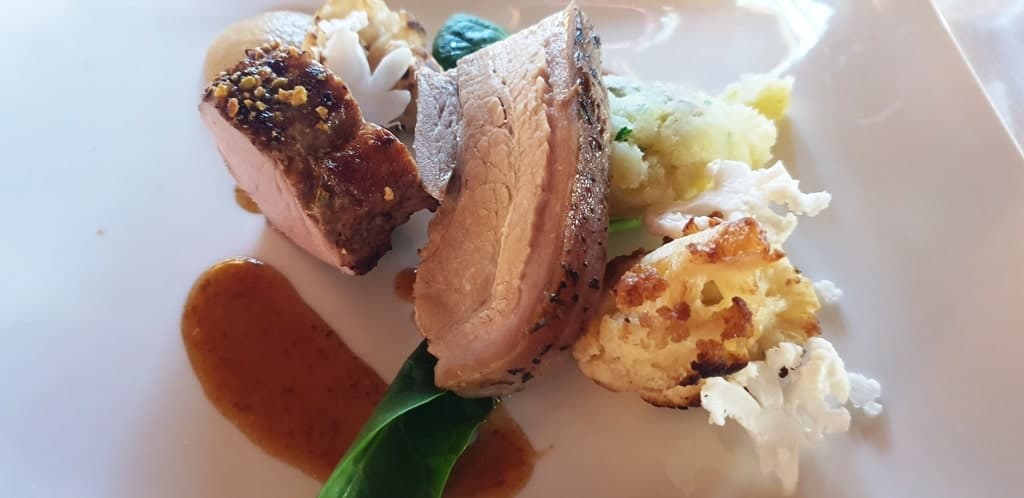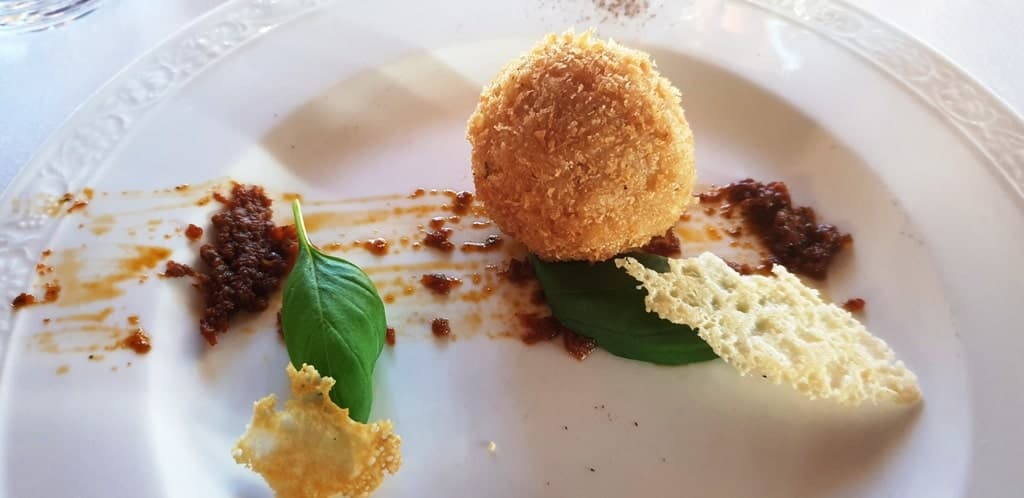France’s network of more than 3,000 kilometers of canal waterways get less recognition than its more famous rivers, but arguably the canals are just as important to the history of France – and Europe as a whole. Built in the 16th and 17th centuries at a time when roads were primitive and dangerous, as a means to transport grains, coal, and other necessities from the ports to Paris and into rural villages, the narrow waterways fell by the wayside with the advent of the railroad and the later automobile and truck transport.
Canals in Burgundy became largely abandoned during the 19th and 20th centuries. Rediscovered in the 1960s by hippie travelers, the canals – and those across France – have since seen a strong resurgence in use. This time, though, it is tourists traveling by luxury barge, many of which rival the river cruise boats in elegance and luxury, not to mention the added charm and exclusivity of a small barge with just 12 passengers.
I recently took a European Waterways cruise aboard the La Belle Epoque along the canal in Burgundy, one of France’s many wine regions. Burgundy lies just one-hour southeast of Paris. The Canal de Bourgogne crisscrosses the region, flowing through lush vineyards and ancient villages.
Table of Contents
The Canal de Bourgogne
The Canal de Bourgogne is a canal in central-eastern France, linking the Mediterranean Sea and the Atlantic Ocean via the Seine and the Yonne and Saone Rivers with the Rhine. It is 242 kilometers long, with 189 locks. We cruised a short section of the canal, from Tanlay to Venarey Les Laumes.
Construction on the Canal de Bourgogne began as early as 1605, under Henry VI of France, although the canal was not fully completed until the 1830s. When it was built, the canal was an engineering marvel, though it never reached the traffic levels its organizers had hoped for, in part because of the one-way tunnel near Pouilly-en-Auxois and partly because of the growth of the railroad.
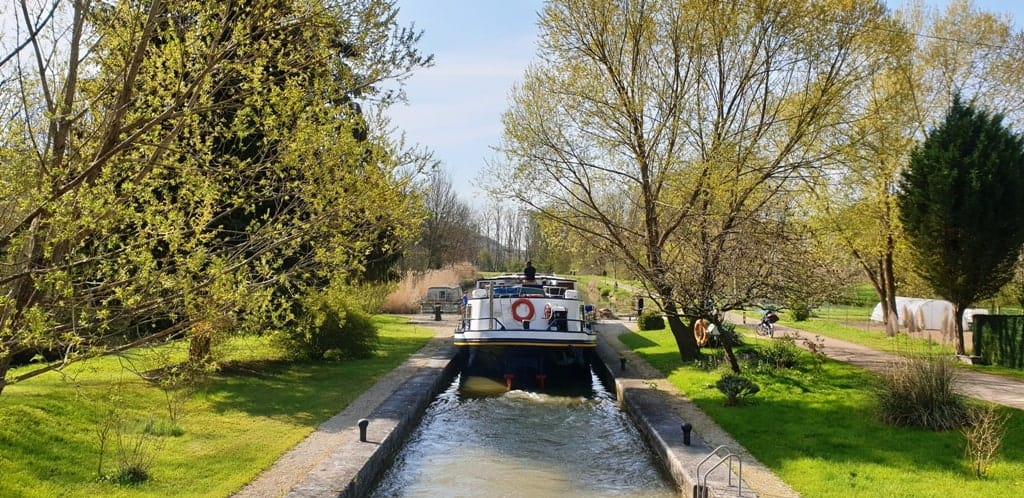
Today, the only traffic permitted on the canal are privately owned boats, hired crafts, and hotel barges like the La Belle Epoque.
The Canal de Bourgogne closely follows the Armaçon River until Buffon, where the landscape shifts from the hilly topography to the wide, flat alluvial plain of the Brenne River. Between Tanlay and Lezinnes, there are six electrified locks, some of the very few electric locks on the canal.
At each lock, a crew member ties up the barge to a bollard that holds the barge steady while it ascends or descends with the water level. It’s very easy to get on and off the barge at the locks – you simply wait until the barge is level with the ground level, and step off.
La Belle Epoque, a Burgundy Barge Cruise
Like many other barges in the European Waterways collection, La Belle Epoque once carried raw materials – not people. In her former life, she carried logs from Burgundy to Paris.
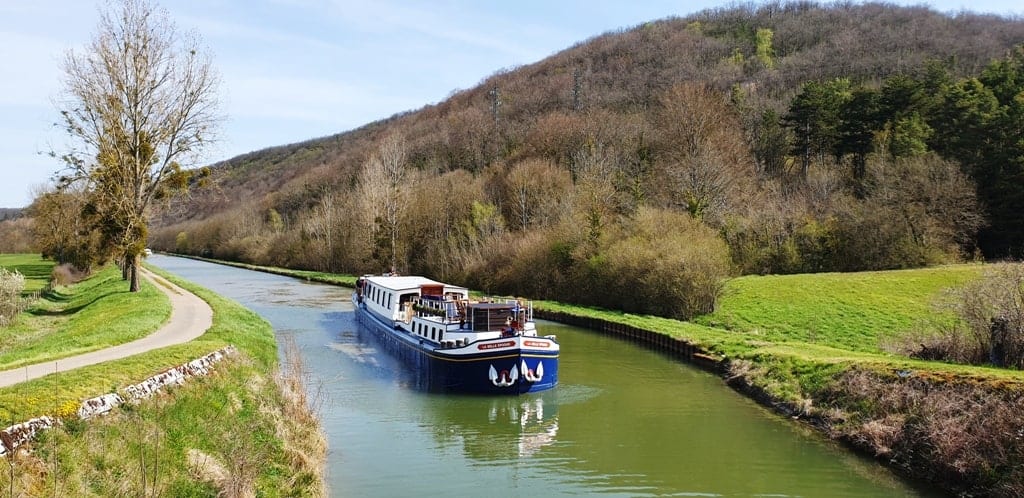
Today, she has been transformed into a long and narrow, delightfully luxurious hotel barge complete with six double cabins, a wood-paneled saloon and dining room with bespoke seating, and a sundeck complete with a jacuzzi. Some of the cabins can be made up of either twin or double beds. All of the cabins come with an ensuite bathroom with shower, sink, and toilet, but are otherwise small and compact, just like the barge.
The passenger part of the barge takes up most of the lower level, where our cabins were. There is also small storage space and the tour leader’s cabin here. On the next level are the saloon, dining room, and sun deck lounge spaces. The crew space, including where the captain steers the barge from, and the kitchen is also on this upper level. The entire barge feels like a personal yacht, not a commercial vessel, and the furnishings are homey and comfortably luxurious.
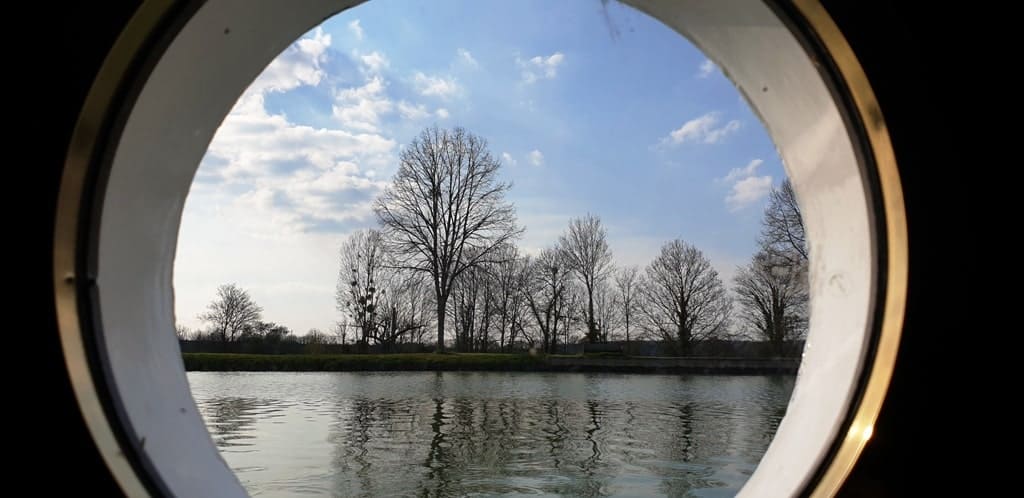
The barge sits low in the water, ideal for navigating the low bridges and narrow locks along the canal. We cruise just 50 miles on our six-day cruise, and never at night, so we can appreciate the seclusion and slow-pace of rural French life along the canals in Burgundy.
What is Barge Cruising Like?
Barge cruising is vastly different from river cruising, but more people are familiar with river cruising than barge cruising. The major differences are that on a barge like La Belle Epoque or with any European Waterways French canal cruise, everything is included, from transfers to and from Paris to meals, fine wines and spirits, and daily, exclusive excursions. La Belle Epoque also came equipped with bicycles for us to take on to the shore. Our particular itinerary also offered an optional hot air balloon ride; this was not included in the cost.
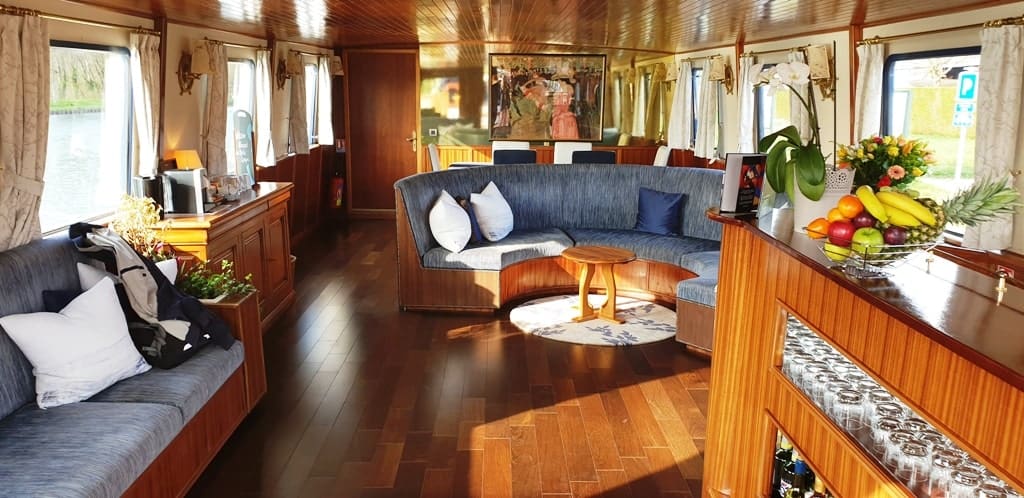
The atmosphere on a Burgundy barge cruise is casual, understated luxury. With a maximum of twelve passengers and six crew, it feels like a house party rather than a cruise, and within just a few hours I felt like I knew my fellow passengers very well. The service and attention to detail are definitely five-star, though, and the crew went out of their way to ensure everyone on board was looked after.
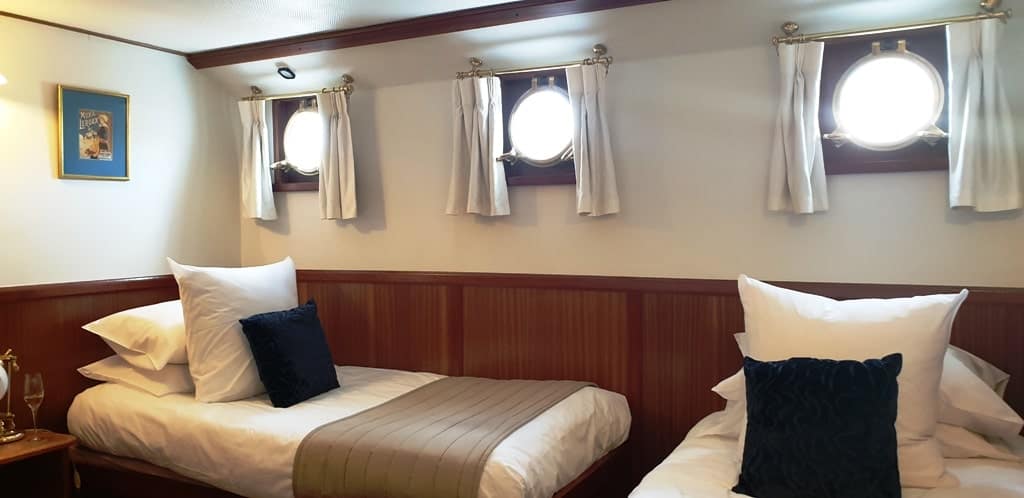
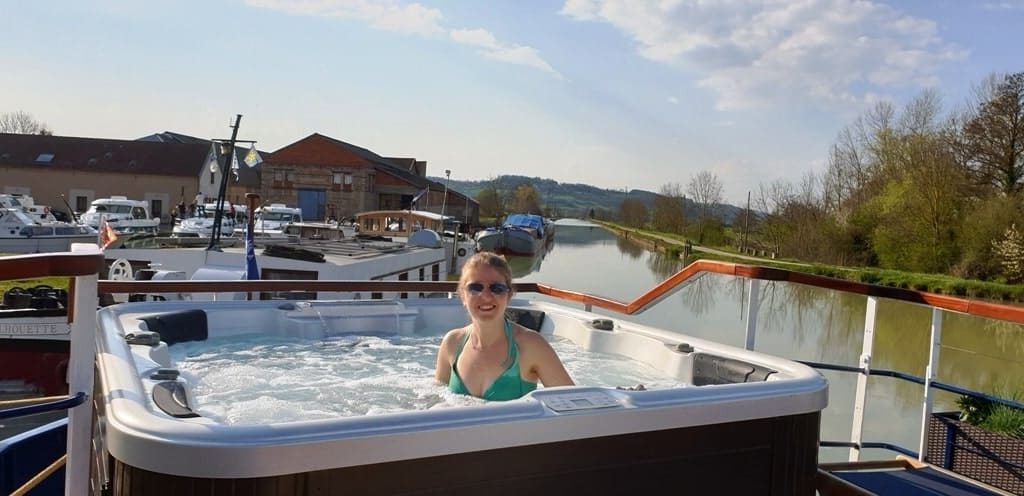
Read more about Barge Cruising in France.
The Crew
Our crew on board La Belle Epoque consists of six people, including the pilot and the chef. While the pilot spends much of the day charting our course through the canal and navigating the narrow locks, our chef is busy preparing our meals.
The hostesses are responsible for helping the chef out with meals and cleaning our cabins as well as the common spaces. We also had a captain, who was in charge of the whole program and also drove us to our various excursions and led us on walking tours of the villages or chateaus.
The Food Aboard La Belle Epoque
The food onboard was absolutely amazing. We had a plentiful breakfast each morning, consisting of fresh pastries and bread from a local bakery, cheese and charcuterie platters, fresh fruits, freshly squeezed juices, and cereal with milk or yogurt. Chef also has a different special every day, like pancakes, crepes, waffles, etc, and can also prepare eggs to order. Lunches were a three-course meal, usually an appetizer, main course, and a dessert.
Dinners were somewhat more elaborate, typically a four-course meal (appetizer, main course, cheese plate, and dessert) that ends with exquisite French cheeses and more wine. Both lunch and dinner included French wines, both red and white. I don’t exaggerate when I say we must have tried about fifty different wines over the course of the week, between our meals and our private wine tastings.
Every afternoon there were tea and sweets, while in the evenings they served cocktails with canapes. Tea and coffee were always available too.
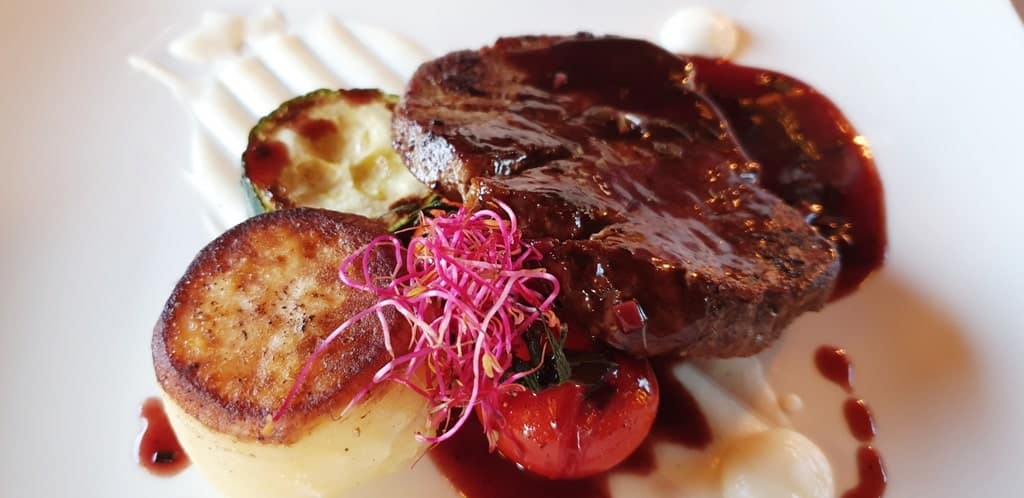
All of our meals were prepared with local, fresh, and seasonal ingredients, so the menu changed daily. Many dishes were traditional Burgundian cuisine, reflecting the region we were in. Most of the produce came from the villages we passed through, too, as did the fresh bread and pastries we had each morning. It seemed like every meal our chef prepared was better than the last!
The Excursions
One of the nicest things about barge cruising in Burgundy is the opportunity to cycle or walk along the towpaths that line the canals. Once used by those towing the barges themselves, now they are the ideal place to amble along as the barge cruises slowly down the canal. Because a barge travels a maximum of 5 kilometers per hour, it’s very easy to jump on or off as you like. I took the opportunity to wander into several picturesque villages along our route.
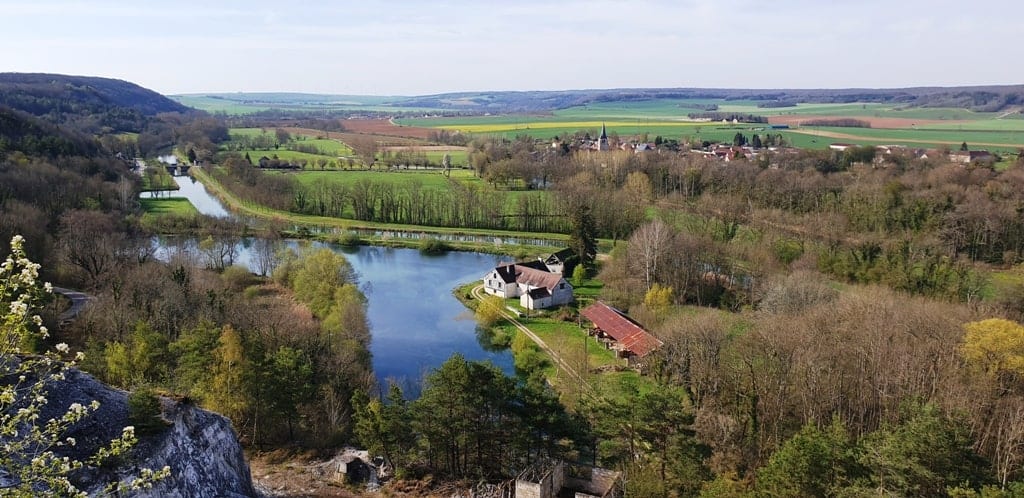
However, we also had a daily excursion each day, often to a nearby chateau or vineyard (or both). Our tour guide always came along with us as host of the day, although we often met another guide or hostess during the tour.
Chablis
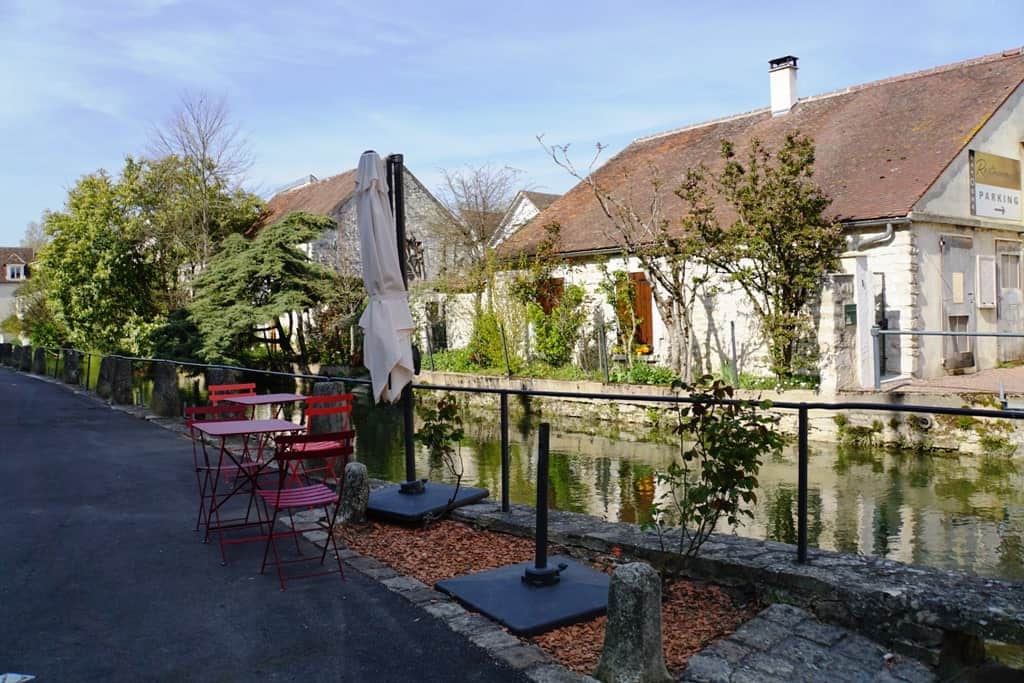
On our first day, we toured the vineyards and town of Chablis, which date back to Roman times. We also enjoyed a private wine tasting at one of the family-run vineyards. Chablis is not just a town, it is also an appellation d’origine controlee that produces exceptional white wines using the Chardonnay grape. As the northernmost wine district in the Burgundy region, Chablis has a much cooler climate than other Burgundian districts. As a result, the wines from this region are less oaked than similar dry white wines.
Ancy-le-Franc
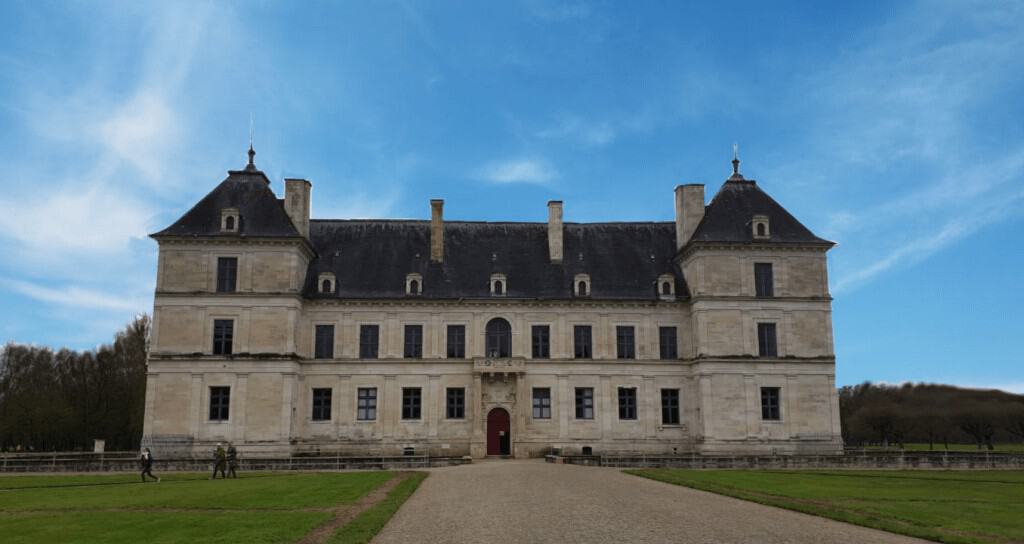
On our second day, we visited Château Ancy-le-Franc. Once the home of French nobility, this beautifully symmetrical, 16th-century masterpiece contains France’s biggest collection of Renaissance murals and is set in magnificent gardens and parkland. I found it very interesting that the chateau is a mixture of French and Italian architecture and styles – a compromise between the French duke and the Italian architect.
Les Ricey
Our third day was one of my favorite days. We visited the Maison Alexandre Bonnet, in Les Ricey, for a private champagne tasting. Maison Alexandre Bonnet is a family-owned Champagne house renowned for a stunning yearly harvest of Pinot Noir that leads to some exquisite vintages. Les Ricey is the only wine-growing area of the Champagne region to have 3 Appellation d’Origine Contrôlées.
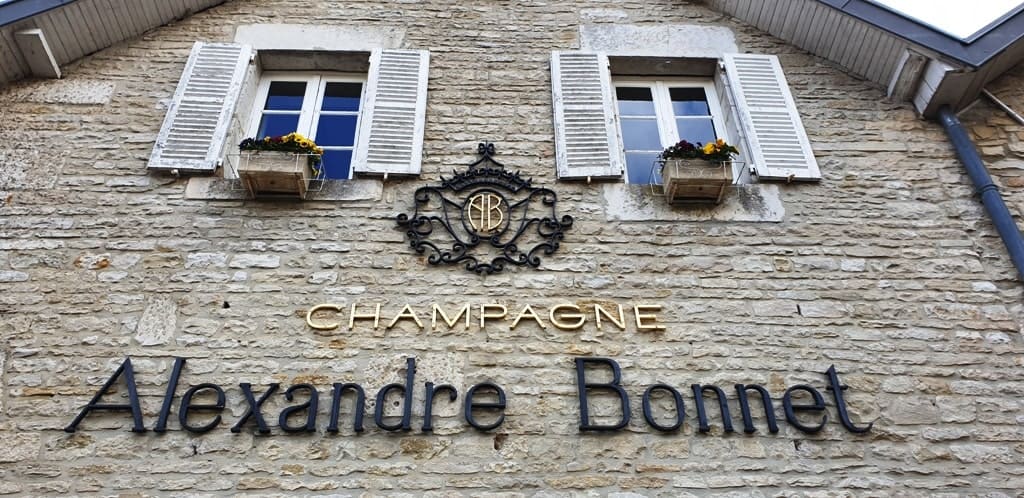
After we tasted an array of champagne, our tour continued with a short drive to the historic and incredible Château de Ricey-Bas. The 12th-century vaulted wine cellars are home to some of the world’s best vintages. It is the ideal location to appreciate the rolling vineyards and enjoy a glimpse of family life in a rural château. Upon arrival, we were greeted by the Baroness herself and offered a glass of champagne. Following our aperitif, we adjourned to the 13th-century kitchens where we savored a gourmet lunch with the Baroness.
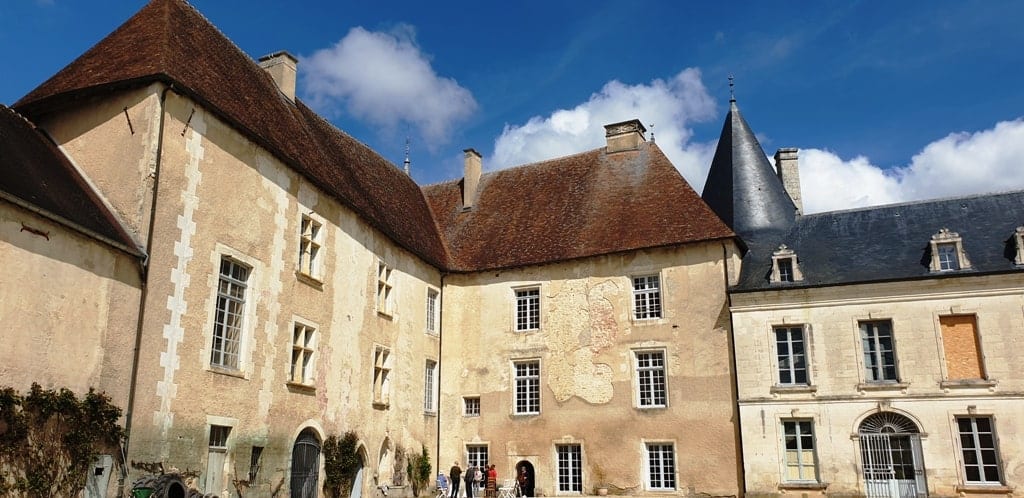
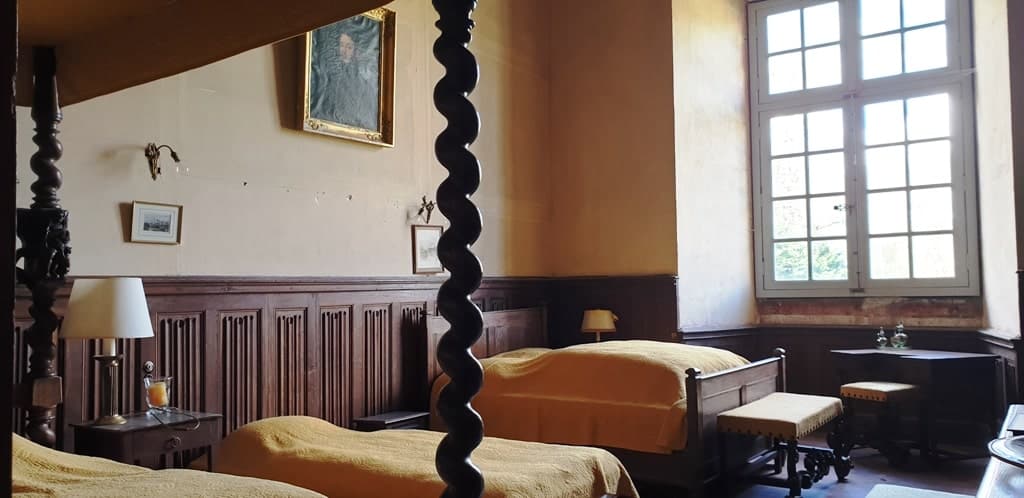
We spent the rest of the afternoon strolling the beautiful gardens, which are modeled after the elaborate 16th and 17th traditional French gardens or exploring the regal chateau interiors. Finally, after saying a fond farewell to the Baroness, we returned to the barge to begin our cruise to Ravieres.
Forges de Buffon and Abbayé de Fontenay
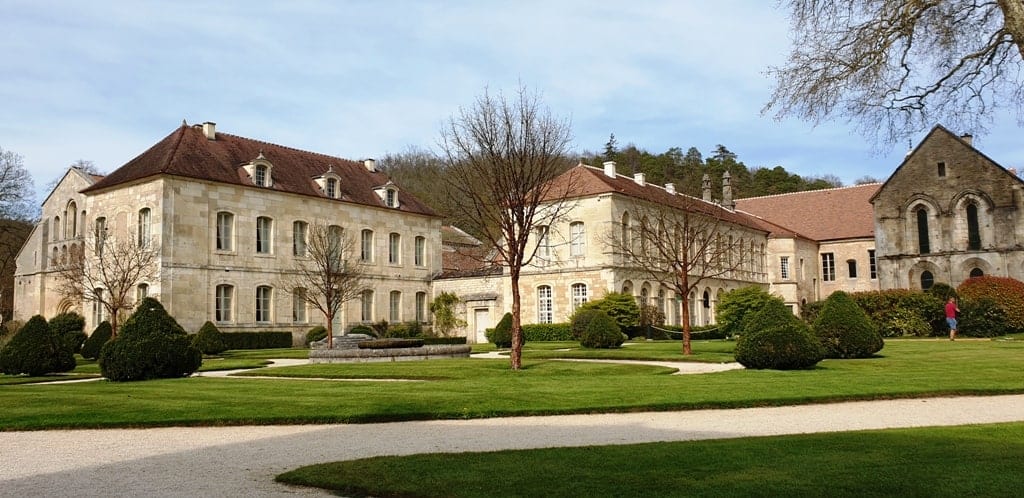
On our fourth day, we cruised past the Forges de Buffon, an exceptional 18th-century ironworks site designed by an expert naturalist and lord Georges Louis Leclerc Buffon, on our way into Montbard. Here, we disembarked and drove to the exquisite UNESCO World Heritage Site of Abbayé de Fontenay.
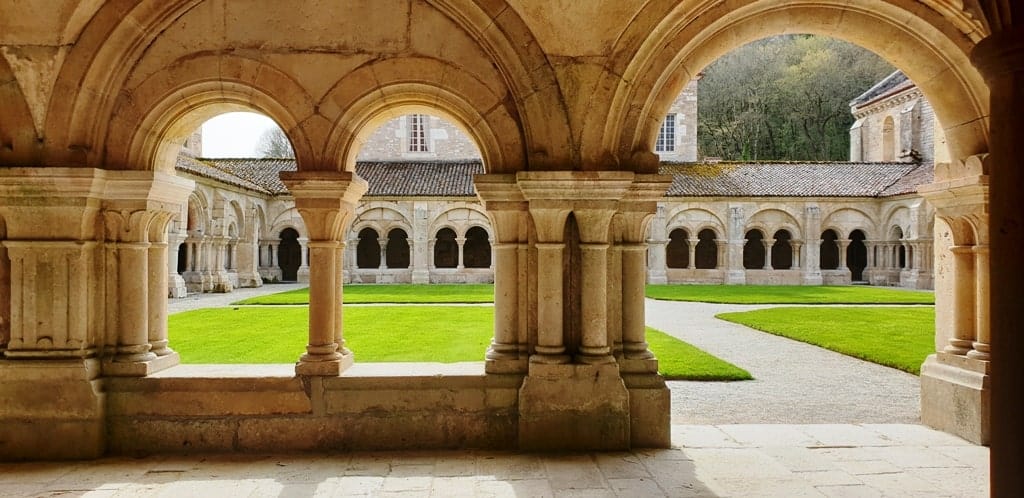
Founded by St Bernard in 1118, Abbayé de Fontenay represents a distinctive example of early Cistercian architecture. The late Romanesque/early Gothic Fontenay allows for an exceptional glimpse of Cistercian life and industry with its peaceful gardens, ponds, and fascinating cloisters, dormitories, and scriptorium.
Chateau de Commarin
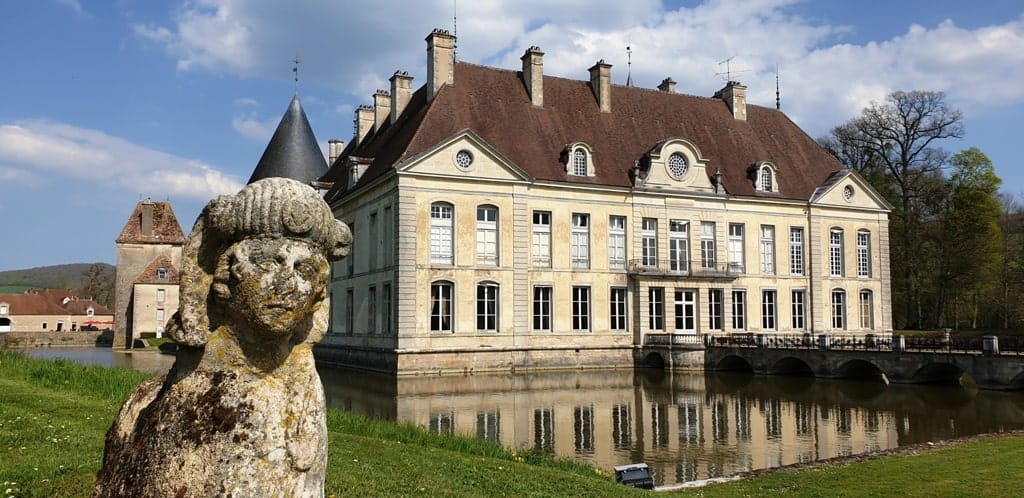
We enjoyed yet another leisurely morning and early lunch on board La Belle Epoque before visiting the moat-encircled Château de Commarin. The palace has never once been sold from the family it originally belonged to. Here, we were treated to a private demonstration of the medieval sport of falconry. The close-up encounter with these majestic birds – against the backdrop of the castle grounds is an absolutely incredible, once in a lifetime experience.
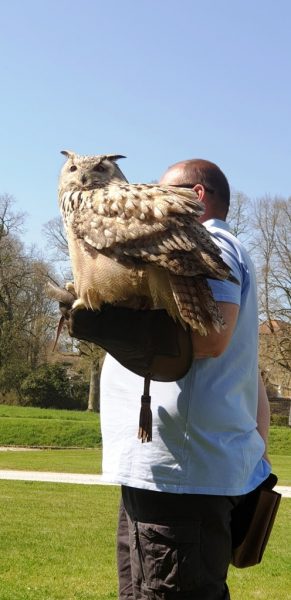
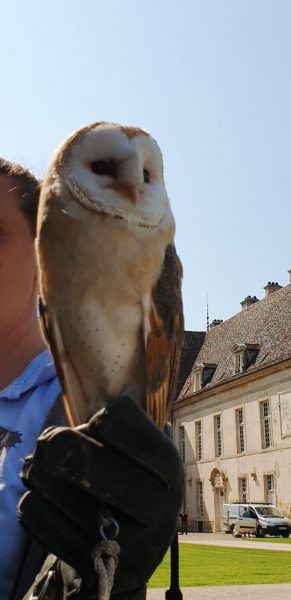
Afterward, we had the chance to meet Count Bertrand de Vogue, the current resident and 26th generation of the de Vogue family to maintain continuous residence since the 13th century. Count de Vogue shared some of his family’s and the house’s history before giving us a private tour.
Cruising the Burgundy canals with European Waterways was an amazing experience. The entire trip was unlike anything I have ever done before and really opened my eyes to a unique way of travel and exploration. The luxury barges on the Burgundy canals are the perfect way to see this unspoilt and rural region of France.
I was a guest of European Waterways but as always opinions are my own.

